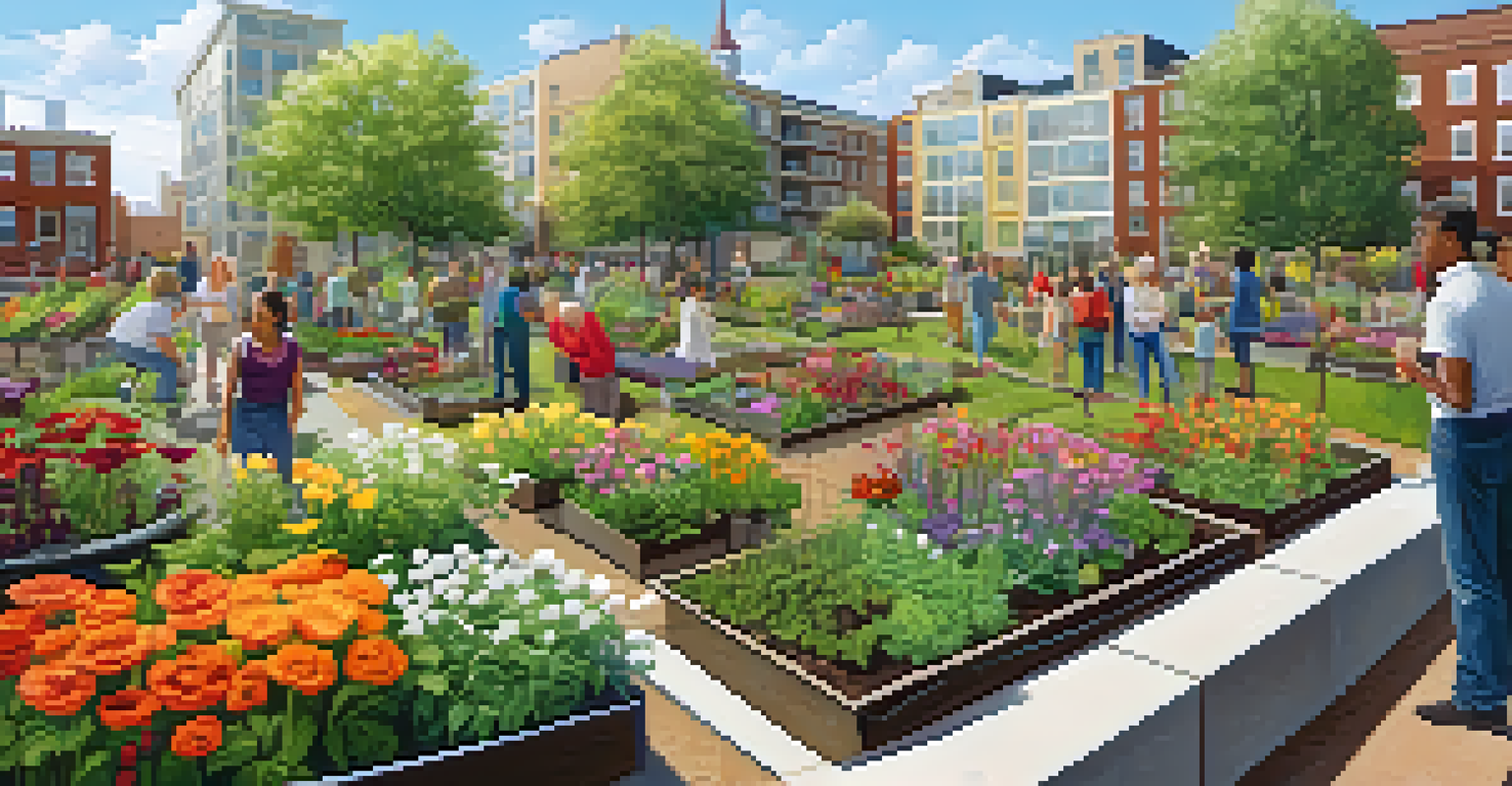Air Quality: Tackling Pollution in San Francisco's Neighborhoods

Understanding Air Quality and Its Importance
Air quality refers to the cleanliness of the air we breathe, which can significantly affect our health and the environment. Poor air quality can lead to respiratory issues, cardiovascular diseases, and even affect mental health. In urban areas like San Francisco, understanding air quality is crucial as pollution levels can fluctuate based on various factors, including traffic and industrial activities.
The air we breathe is a precious resource; we must protect it for our health and the health of our planet.
The importance of air quality extends beyond individual health; it also impacts the community at large. For instance, children, the elderly, and those with pre-existing health conditions are particularly vulnerable to air pollution. Therefore, improving air quality is not just a personal concern but a collective responsibility that can foster a healthier environment for all residents.
Cities worldwide are taking steps to monitor and improve their air quality. By educating the public about the significance of clean air and engaging them in local initiatives, we can build a stronger community focused on health and sustainability.
Current Air Quality Challenges in San Francisco
San Francisco faces several air quality challenges, largely driven by urbanization and transportation. With heavy traffic and a bustling economy, pollutants from vehicles contribute significantly to the city's air quality issues. Additionally, during certain times of the year, wildfires in nearby areas can exacerbate air pollution, leading to unhealthy air conditions.

Another challenge is the geographic layout of the city, which can trap air pollutants in certain neighborhoods. For example, areas with higher traffic congestion may experience elevated levels of smog and particulate matter. Understanding these challenges is vital for developing targeted solutions that address specific needs of each neighborhood.
Air Quality's Health Impact
Poor air quality can lead to serious health issues, making it essential for communities to prioritize clean air initiatives.
Community awareness is essential to tackle these challenges effectively. Educating residents about pollution sources and encouraging sustainable practices can create a ripple effect, leading to improved air quality over time.
Community Initiatives for Cleaner Air
San Francisco has implemented several community-driven initiatives aimed at improving air quality. Programs such as 'Clean Air SF' focus on reducing traffic congestion and promoting public transportation. By encouraging residents to use buses, trains, or bicycles, the initiative aims to lower vehicle emissions and enhance air quality throughout the city.
The environment is where we all meet; where we all have a mutual interest; it is the one thing all of us share.
Additionally, local organizations often host workshops and events to educate the public about pollution and its health impacts. These initiatives empower residents to take part in air quality improvement efforts, fostering a sense of ownership and responsibility within the community.
Collaborations with schools and businesses are also crucial. By involving various stakeholders, San Francisco can create a united front against pollution, ensuring that efforts are comprehensive and effective.
Technology's Role in Monitoring Air Quality
Technology plays a crucial role in monitoring air quality in San Francisco. With the advent of air quality sensors and mobile applications, residents can now access real-time data on pollution levels in their neighborhoods. This information empowers individuals to make informed decisions about outdoor activities, especially during poor air quality days.
These technological advancements also aid city officials in tracking pollution sources and trends over time. By analyzing data collected from various sensors, policymakers can identify problematic areas and implement targeted interventions to mitigate pollution.
Community Initiatives Matter
Local programs like 'Clean Air SF' engage residents in reducing pollution through sustainable practices and public transportation.
Moreover, public engagement with tech tools enhances community awareness and participation. When residents are informed about air quality issues, they are more likely to advocate for changes and contribute to local initiatives.
Legislative Actions Impacting Air Quality
Legislation plays a significant role in shaping air quality policies in San Francisco. Recent laws aimed at reducing greenhouse gas emissions and promoting renewable energy sources are steps in the right direction. By setting stringent regulations on emissions from vehicles and industries, the city is actively working to improve its air quality.
Moreover, initiatives like the 'Clean Air Act' provide a framework for monitoring and enforcing air quality standards. These laws not only help reduce pollution but also promote sustainable practices among businesses and residents alike.
Community support for legislative actions is vital. By advocating for robust air quality policies, residents can influence local government decisions and ensure that air quality remains a priority in urban planning.
The Role of Green Spaces in Improving Air Quality
Green spaces are essential for enhancing air quality in urban areas like San Francisco. Parks, gardens, and trees can absorb pollutants and provide cleaner air for residents. Moreover, they contribute to the overall aesthetic and well-being of neighborhoods, creating a healthier living environment.
Cities are increasingly recognizing the importance of integrating green spaces into urban planning. By developing parks and planting trees, San Francisco can combat air pollution while promoting biodiversity and community engagement.
Technology Enhances Monitoring
Advancements in technology allow for real-time air quality monitoring, empowering residents to make informed decisions about outdoor activities.
Encouraging residents to participate in local greening initiatives can further enhance these efforts. Community gardens and tree-planting events not only improve air quality but also foster social connections and a sense of belonging among neighbors.
Future Steps for Air Quality Improvement
Looking ahead, San Francisco can take several steps to further improve air quality in its neighborhoods. Expanding public transportation options and promoting electric vehicles are promising strategies to reduce emissions. Additionally, implementing stricter building codes that prioritize energy efficiency can help minimize pollution from construction activities.
Engaging the community in ongoing air quality monitoring and education efforts will also be crucial. By fostering a culture of awareness and action, residents will remain informed and motivated to contribute to cleaner air initiatives.

Finally, collaboration between government, businesses, and residents will be vital for sustained air quality improvements. By working together, San Francisco can build a healthier future for all its residents.